Pink Potentilla: varieties and their cultivation

Pink Potentilla is a beautiful ornamental shrub that can be a luxurious addition to a garden or landscape park. An unpretentious plant of the Rosaceae family adapts well to various climatic conditions, has abundant and long flowering. With the right choice of variety, the cultivation of pink shrub Potentilla is not a hassle. In addition, this shrub is a real long-liver and can delight owners with its beauty for 20-30 years. What varieties of pink cinquefoil are considered the most popular?
Among the favorites of experienced and novice gardeners can be found "Pink Queen", "Pink Beauty" or "Lovely Pink", "Pink Paradise". All these varieties have exquisite external data, it remains only to give preference to a specific shrub or to plant everything at once, creating an effective landscape composition.
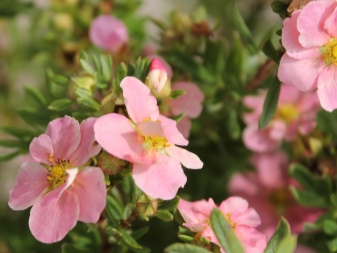
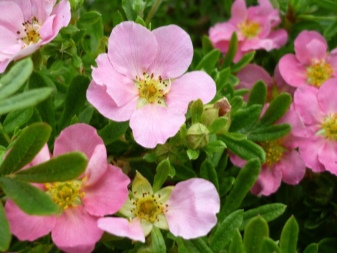

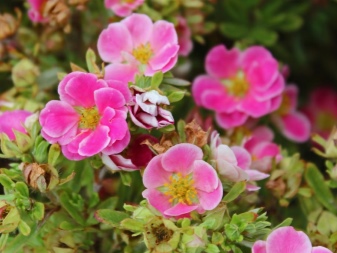
Description of the plant
Pink Potentilla is a shrub plant of a rather modest size. The average crown height does not exceed 0.5-0.8 m, the diameter of the bush, depending on the variety, is 0.5-1 m.The pink color is not typical for this plant and gives it a special decorative effect, because most types of Potentilla are observed yellow color of the petals. A shrub in the wild is also called Kuril tea, when cultivated it adapts well to various climatic conditions, can grow in a gas-polluted metropolis or in a rather cold climate.
Pink cinquefoil is a plant of the northern hemisphere that does not require complex care. It belongs to the Rosaceae family, which is characterized by the formation of a large number of buds on the bush and beautiful flowering. The crown of such plants is creeping, the growth is average - the increase per year is 10-15 cm.The leaves have a rich color and a length of no more than 3 cm.
For all varieties of pink Potentilla, flowering is characteristic throughout the warm season, from early summer to mid-autumn.

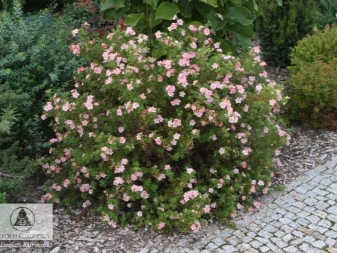
Varietal variety
Shrub pink Potentilla does not pamper gardeners with a variety of varieties. The most popular in cultural breeding are 3 main varieties.
- Pink Beauty (also called Lovely Pink). A compact, undersized shrub with dense branching, characterized by high decorative effect due to the combination of small leaves and large flowers with cups up to 5 cm. This variety is especially good in group plantings, in the design of alpine slides. It also looks good in rabatkas, borders that are not subject to haircuts. Growing up to only 0.5 m in height, the bush will delight with its flowering from June to October.
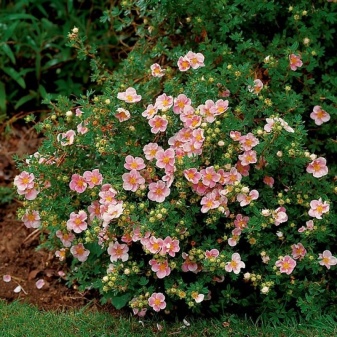

- Pink Paradise. A shrub with an original spherical crown, which grows up to 1 m in diameter, grows up to 0.8 m.The shoots are brown, branch intensively, grow by 20 cm during the season.The cirrus green leaves of this variety have properties to turn yellow with the onset of autumn and beautifully set off semi-double flowers delicate pink with a yellow center. Used "Pink Paradise" in the design of urban and private landscapes, in combination with other perennials forms beautiful compositions, looks good against the background of dwarf conifers.
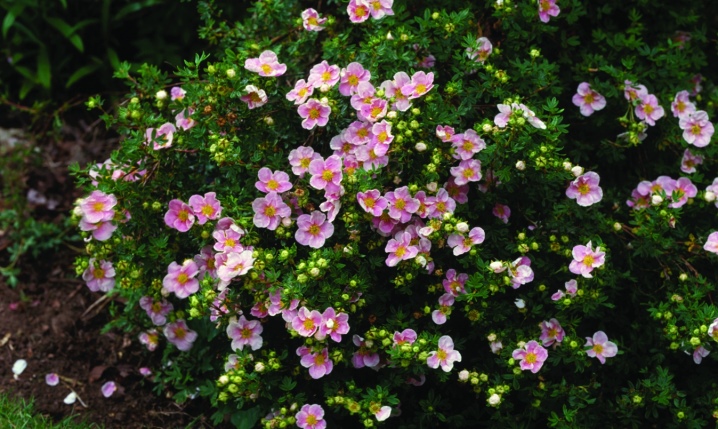
- "Pink Queen" or "Pink Princess". These related varieties have a spherical crown shape, grow up to 1 m in height, the shoots are covered with green hairy foliage with a slight silvery tint (does not appear immediately). Flowers grow up to 3.5 cm in diameter, abundantly decorate the surface of the bush. The variety often acts as a tapeworm in the middle of lawn plantings, it is used to decorate slopes, flat roofs, rocky gardens.
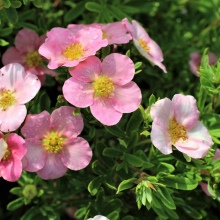
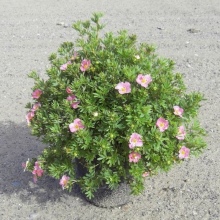

How to plant correctly?
The process of planting pink Potentilla means choosing the right place for it. The plant is photophilous, needs to be planted in sunny, open places, but withstands a little shading during the day. Soil preparation is also not difficult. It is enough to dig up the soil well, to provide it with high-quality drainage. It is recommended to add a certain amount of lime to the prepared hole.
Rooting of the plant is recommended in the spring - as soon as the snow melts. The hole should have a volume twice the size of a clod of earth with roots. The transfer of the seedling should be done carefully, by transferring it from the container. This is due to the fact that the root system of pink cinquefoil is quite branched and sensitive to damage. The optimum distance between individual plants is at least 50 cm.

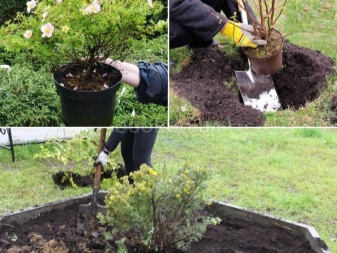
The soil removed from the planting pit turns into a fertile nutrient substrate. To do this, it is combined with 2 parts of humus and leafy earth and 1 part of sand. To increase the nutritional value of the soil, it is worth adding 100 g of mineral fertilizers in the complex. Before planting, a small part of this mixture is covered with a drainage layer.
The seedling is placed in the center of the hole, the position of the root collar is carefully monitored - it should not be underground. A prepared soil mixture is laid on top of the roots, the hole must be filled to the brim. The ground from above can be slightly compacted, then the first watering can be done.
In the first 30 days after planting, it is recommended to regularly monitor the soil moisture level.

How to care?
Caring for pink shrub cinquefoil is included in the general list of procedures that need to be carried out with the plant as it grows. Among the important agrotechnical measures, we note the following.
- Protection against insects and diseases... When damaged by rust or powdery mildew, attacks by the scoop, the cinquefoil does not bloom, becomes weak and may die. If signs of fungal infection are visible on the shoots, it is worth immediately treating with fungicides, insecticidal preparations will help from insects. For prophylaxis, at the beginning of flowering, spraying with Bordeaux liquid is performed, later during the warm season, colloidal sulfur is treated.



- Regular watering. It is especially important for young plants, which moisturize every other day by adding 10 liters of water at the root. Adult bushes require less watering, no more than 2 times a month, but you need to control the soil, not letting it dry out. Moisture is added in the evening hours, after the sun has disappeared behind the horizon.

- Top dressing. The first time it is carried out in the spring, immediately after the snow melts, in the form of a liquid complex on a nitrogen basis. Before fertilizing, the soil in the trunk circle is shallowly loosened. Summer feeding should be carried out with phosphorus fertilizers, the autumn portion should be potassium-based. The use of organic matter is also possible.


- Pruning. The formation of the bush is important for the decorative pink Potentilla. It is recommended to prune its crown in spring, in April-May, removing dry branches, too long or weak lateral branches. With proper pruning, the crown will acquire the desired shape, and flowering on the shoots will be as abundant as possible. The shortening should normally be 1/3 of the total length of the shoots, fast-growing varieties are cut in half, sanitary measures can be taken in the fall by removing diseased or dead plant parts.
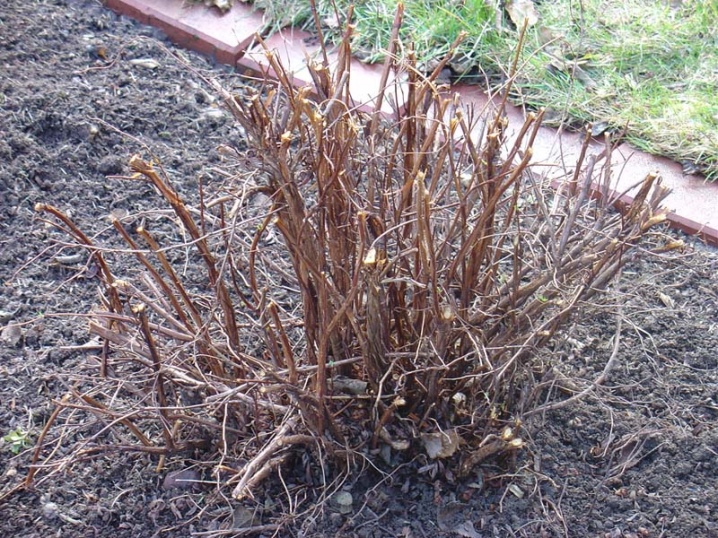
- Preparing for winter. It is necessary only for young plants, at 1 year of their life. In this case, the root part of the trunk in the fall, at the onset of the first frost, is covered with a thick layer of mulch. Then the surface of the shoots and leaves is sprayed with a solution of Bordeaux liquid. The upper parts of the branches are connected in a bundle, wrapped with a covering material.
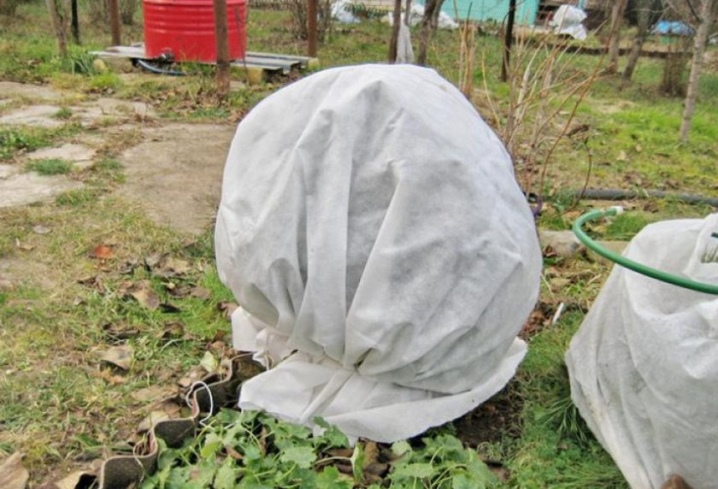
Use in landscape design
Pink Potentilla is actively used in the field of landscape design. The plant is very popular among gardeners due to its high decorative effect and compact size. It goes well with flowering perennials, it can become a central accent in the design of a flower bed. The spectacular appearance allows you to combine cinquefoil with different petal colors in the garden.
When planting a shrub on a lawn, it will act as a specimen plant.

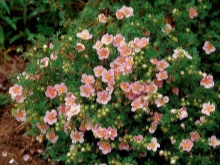
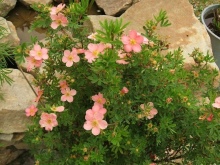
Pink Potentilla is suitable for landscaping urban, garden, park landscapes. Without significant pruning, it can be used as a curb plant, framing the territory or decorative elements on the site. Such a hedge does not obstruct the view and at the same time successfully fulfills its functions due to the density of the branches and the good growth rate of the shoots. Pink cinquefoil can often be seen in group plantings, with other shrubs, fruit and garden trees. She gets along well with conifers, but should not be obscured by them from sunlight.
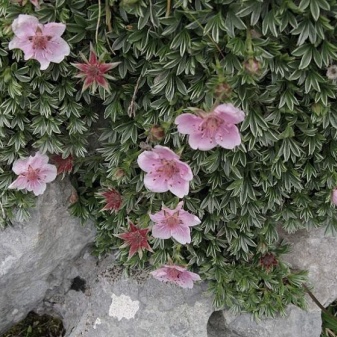
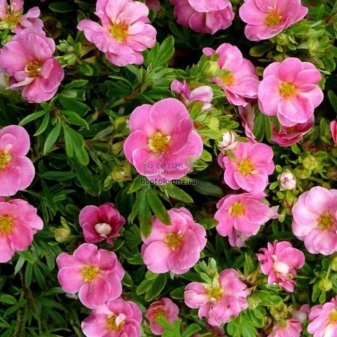
See below for proper care and cultivation of Potentilla.



































































The comment was sent successfully.